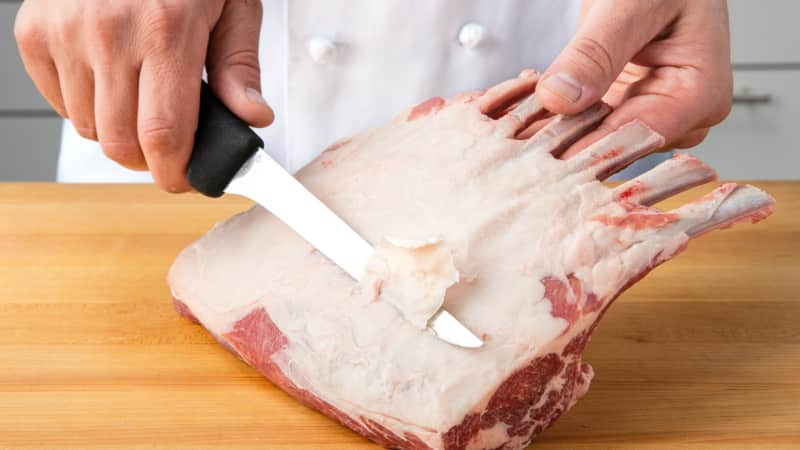When we cook a rib-eye steak or roast a rack of lamb, it's the muscle itself (rather than the fat or water contained in and around it) that most grabs our attention. This makes sense, given that the muscle fibers provide much of the characteristic color and texture of a given cut.
More Fat Means Gamier Flavor in Lamb
Published Mar. 21, 2019.

And yet, when it comes to flavor, we might just be better off focusing on the fat, especially when dealing with lamb. Research has shown that unique branched-chain fatty acids are responsible for much of the “grassy” and “gamey” flavor we associate with lamb. To find out just how important these fatty acids are, we ran the following experiment.
Sign up for the Notes from the Test Kitchen newsletter
Our favorite tips and recipes, enjoyed by 2 million+ subscribers!
Experiment
We separately ground lean domestic lamb from the loin and domestic lamb fat trim from the rib section and then combined them in varying ratios to create three different blends. The first consisted of 100 percent lean meat. The second contained 90 percent lean meat and 10 percent fat, and the third contained 80 percent lean meat and 20 percent fat. We made 20-gram burger patties out of each blend and cooked them in a hot skillet until well browned on both sides (at which point the thin patties were fully cooked). We had tasters try all three samples and note the intensity of the lamb flavor for each.
Results
Tasters unanimously found the 90:10 and 80:20 blends to have more characteristic lamb flavor than the 100 percent lean patties. While the responses were more split for the meat and fat blends, a slight majority of tasters marked the 80:20 blend has having more lamb flavor than the 90:10 patties.
Takeaway
We find it intriguing that even though they technically contained less lamb meat, both the 90:10 and 80:20 blends tasted more like lamb. This test provides further support to the old adage that fat equals flavor. We would argue that when it comes to lamb, that correlation cannot be overstated.
With this knowledge we have a greater ability to cook lamb to our particular tastes. Beyond choosing between grass-fed and grain-fed lamb, we can choose the right cut at the supermarket. Cuts from the shank, shoulder (including roasts, chops, and stew meat) have more fat and thus a more intensely lamby flavor, while cuts like rack of lamb, rib chops, and loin chops have less fat and taste sweeter. Lamb flavor can also be controlled in the kitchen by adjusting fat content through trimming. Removing some, or all, of the fat cap on a rack of lamb, for example, will create an even milder end product, while leaving it intact will boost lamb flavor.
The Flavor of Lamb is in the Fat
We ran a taste test containing three samples of lamb—one containing 100 percent meat, another with 90 percent meat and 10 percent fat, and a third with 80 percent meat and 20 percent fat. The results? Tasters unanimously found the samples containing fat far more "lamby" than the pure meat sample. When it comes to lamb, fat really does equal flavor.
